Story of brave resort men in the trenches
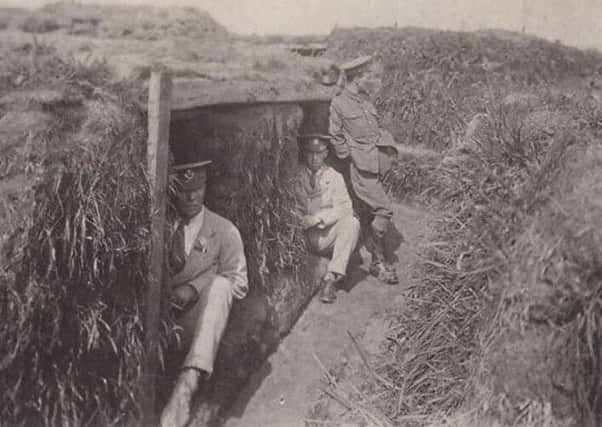

Among the 8,000 soldiers who arrived at Blackpool Central Station in early November 1914, were more than 1,200 men of the 4th and 5th Territorial battalions of the Loyal North Lancashire Regiment – who were billeted upon house-keepers and hoteliers in the northern end of the town, while conducting their training on the sands of Clifton Park racecourse.
Soon after they arrived in Blackpool, an appeal made by Lord Derby in the Grand Theatre met great opposition from townsfolk when he asked local recruits to join the 4th Loyals. A committee was formed that claimed the town’s honour was at stake if they allowed Derby to fill his ranks with Blackpool men, as it was not in the regiment’s recruiting area at that time.
Advertisement
Hide AdAdvertisement
Hide AdHowever, given the proximity of the town to the regimental depot in Preston, there were already large numbers of Blackpool men serving, or would elect to serve with the Loyals, instead of regiments more traditionally linked with the town.
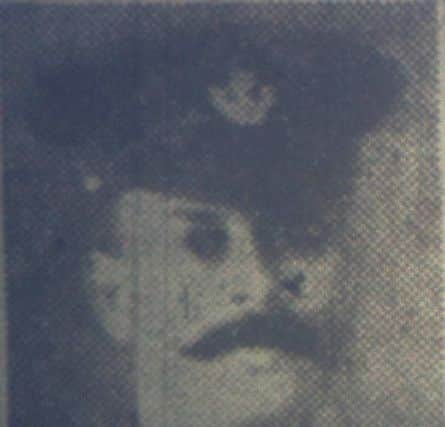

Two of the first casualties sustained by the 1st Battalion were from Blackpool and formed part of the British Expeditionary Force, which had sailed to France just eight days after war was declared. During the night September 13, 1914, the 1st Battalion had crossed the Aisne to face the right wing of the German First Army, who were occupying the high ground surrounding the vast plains in the area and were planning to attack a factory near Troyon the next morning.
We have an account of events that night on the website, but to summarise, the men were caught out in the open when the thick fog which had been hiding their advantage lifted at the break of day.
Second Lieutenant JGW Hyndson wrote in his diary about how the German machine guns were constantly traversing up and down their line – causing a truly appalling number of casualties. Among these was 19-year-old Private Harry Melling, an apprentice bricklayer pre-war who had been living in Allendale, off Lytham Road, South Shore, and 19-year-old Private Richard Waring, son of Margaret Waring of Beech Street, North Shore. He died two days later from the wounds he had sustained that morning.
Advertisement
Hide AdAdvertisement
Hide AdThe battalion was still in the general vicinity of Troyon a month later, when Private William Keen (pictured), born in Blackpool but who lived in Preston, was killed during a German attack on the British trenches.
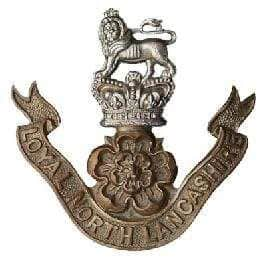

Soon after this, the battalion moved on towards Ypres where Private William Broadley, of Devonshire Road, Blackpool, was killed while they were tasked with re-taking the trenches along the Bixsencote to Langemarck Road.
Blackpool men’s participation in the war wasn’t limited to the Western front.
The 2nd Battalion of the Regiment were with the British Indian Expeditionary Force B in German East Africa. On November 4, 1914 they took part in the Battle of Tanga, which was the first major event on this continent and saw the British defeated by a significantly smaller force of German Askaris and colonial volunteers.
Advertisement
Hide AdAdvertisement
Hide AdThe battle earned its nickname the Battle of the Bees due to the large swarms of African bees, which had been disturbed in their hives and had furiously stung both the attacking and defending forces alike.
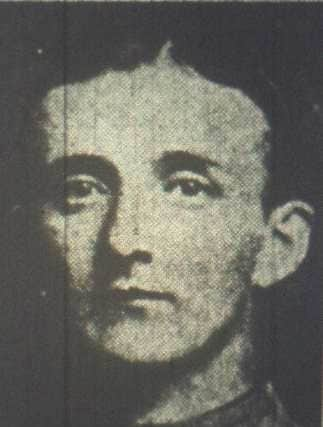

Private Thomas Bamber, a pre-war regular soldier from Blackpool, was among the 44 Loyal North Lancs’ casualties on this day.
Back in Blackpool, Corporal Harold Butterworth of the 2nd/5th battalion was found dead on February 16, 1915, in Blackpool Central Public Library. This was the staff headquarters for the troops based in the town and Harold was noticed missing after going up some steps while on guard commander duties.
A bugler boy found Harold dead at the top of the concrete steps 25 minutes later and the inquest found he had tripped – being tired after a 15-and-a-half-hour shift overnight with no sleep.
Advertisement
Hide AdAdvertisement
Hide AdThe 3rd/4th and 3rd/5th battalions arrived in Blackpool in October 1915 and soon several officers reported a lady had approached them on numerous occasions while they were resting in the Queens Hydro Hotel and questioned them on when they were leaving for the front? A chambermaid also noted the lady, Mrs M J King, had pinned the curtains down in her room – leaving a small gap to peep through, which she did exclusively when the troops were outside.
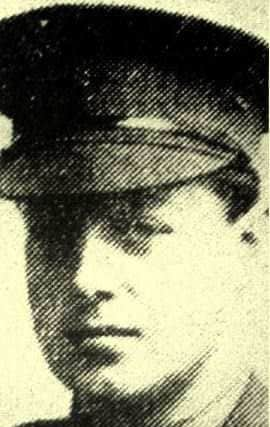

Mrs King was summoned before magistrates for displaying excessive and unwelcomed curiosity about the movements of the newly-arrived troops, but maintained her innocence by saying her interest was that she had relatives serving with the British at the front. She was fined £10 for breaching the Defence of the Realm Act.
To improve their training and attempting to replicate what would be encountered in France, on South Shore, they constructed a replica of the trenches at Loos – stretching a total of almost two miles and featuring communications trenches, dugouts, saps, redoubt fortifications, firing trenches and telephone dugouts.
The training trenches, which went on to become a tourist attraction, are now located under Watson Road Park and were partly excavated in July 2014.
Advertisement
Hide AdAdvertisement
Hide AdCasualty reports filtered back to Blackpool steadily throughout the First World War and were often supplemented by letters from officers or comrades expressing their sympathies with the families.
In late March 1916, the family of Lance Corporal John Cartmell, 1st battalion, received the awful news he had been killed by a mortar, while leaving the trenches around Arras. It may have been some comfort for them to read comments by a fellow soldier, stating he had “never seen a cooler man under fire... He was thought the world of by everybody and would do anything for his pals, no matter how dangerous the work.”
Amid the horrors happening overseas, the people of Blackpool would turn out in large numbers to offer their support to soldiers billeted in the town.


One the morning of March 18, 1916, two men of the 1/4th Battalion were honoured with Distinguished Conduct Medals, presented by Col Gratton on the Promenade, to the sound of the drums of the 3/4th Battalion band and 300 marching men, which was the first ceremony of its kind in the seaside resort.
Advertisement
Hide AdAdvertisement
Hide AdOne of the two men being honoured was Company Quartermaster Sgt Edmund Lester (pictured) – a professional footballer pre-war, he was recognised for his gallantry during the Battle of Festubert, the great bayonet charge of June 1915.
His citation reads: “For conspicuous gallantry and good service. When all his officers were killed or wounded he took command, rallied his men by standing out in the open, and led them with great daring – both in the advance and subsequent retirement.”
The Early of Derby had made the suggestion earlier in the war that the men might be more willing to enlist in the New Armies, if they could be assured of fighting alongside their own friends, neighbours and workmates.
Kitchener gave his blessing to this idea and sanctioned the raising of battalions by local councils, or even individuals, of what became known as “Pals Battalions.”
Advertisement
Hide AdAdvertisement
Hide AdThe Battle of the Somme, between July and November 1916, is remembered above all battles for the huge numbers of casualties among these Pals Battalions. The 7th Loyal North Lancs was one such battalion and much is written about their D Company, the Preston Pals. However, perhaps not so well known is the fact the three other companies making up the battalion were filled by Pals from Blackpool, Kirkham and the Fylde and Chorley.
A failed attack on the Somme, near Guillemont on July 23, 1916, saw the 7th Battalion suffer more than 70 casualties and at least three of these were closely connected with Blackpool.
One was Lancs Corp Albert Hinkley, who was born in Sheffield, but resided on Topping Street, Blackpool. Another casualty was 21-year-old Private Graham Forbes, who was the son of George and Mabel Forbes of 56 Saville Road and the third was Private Thomas Clifford Armitstead who was born and raised in Blackpool, and died of wounds later that day.
The three Blackpool pals weren’t the first Loyals with Blackpool connections to be killed on the Somme and sadly, they wouldn’t be the last.
Advertisement
Hide AdAdvertisement
Hide AdPrivate Arthur Butler, who was born in Blackpool but resided in Manchester, was killed on July 7, 1916, as the 9th (Service) Battalion was attacking two successive lines of German trenches and another 9th Battalion man, Private William Gough, was killed after being ordered “over the top” at Hessian Trench, on October 21.
July 31, 1917 saw the start of the Third Battle of Ypres, Passchendaele and Blackpool would lose at least six Loyal North Lancashire Regiment soldiers who died here in the mud and rain on the Ypres salient.
Siegfried Sassoon later famously wrote the line “I died in hell – they called it Passchendaele” – which for Lieutenant George Glaister (pictured), Second Lieutenants John Herbert Ogden and Volney Mather and Privates Fred Rawcliffe, William Booth and Patrick Charles Doherty, was nothing but the truth.
There would be many more Blackpool casualties with the Loyal North Lancashire Regiment before the war finally ended, and more stories can be found on the project’s website, www.loyalregiment.com
Advertisement
Hide AdAdvertisement
Hide AdAnyone who can help preserve the memory of these men can send photographs or information to [email protected]
• With thanks to a group of regular contributors, including Janet Davis, Adam Cree and Bill Brierley over the last four years, there have been more than 1,100 soldiers’ biographies published on the website www.loyalregiment.com and these are being archived for preservation by the British Library.